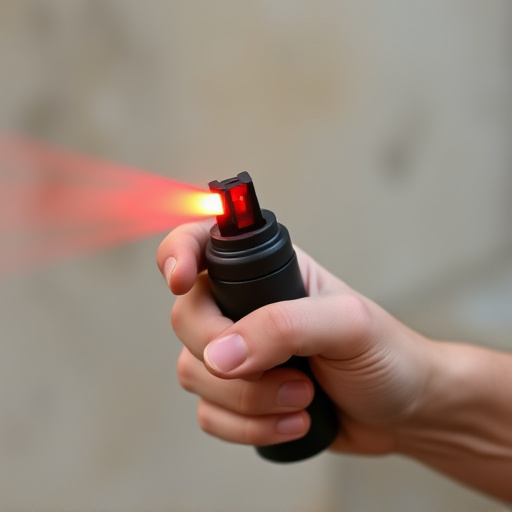Despite concerns about dilution, modern pepper spray remains effective against attackers, evaporating water quickly and preserving potency for up to an hour. Active ingredient capsaicin disrupts sensory perception and mobility, providing users time to escape or seek help. In rain, however, environmental factors like droplet size, intensity, and duration can significantly impact the spray's range and impact, necessitating strategic deployment and protective measures to optimize performance under wet conditions.
“Uncover the power of an often-underestimated self-defense tool—Oleoresin Capsicum (OC) spray. This article delves into the science behind its effectiveness, particularly in challenging conditions like rain. We explore how OC spray works and what makes it a reliable defense mechanism. Additionally, we analyze the impact of rainfall on its performance, providing essential safety measures for optimal use during wet environments. Discover the strategies to ensure its efficacy and learn why understanding these factors is key to making informed decisions about personal safety, especially in unforeseen weather events.”
- Understanding Pepper Spray: How It Works and Its Active Ingredients
- The Impact of Rain on Pepper Spray Performance: A Comprehensive Analysis
- Effective Use and Safety Measures for Pepper Spray in Rainy Conditions
Understanding Pepper Spray: How It Works and Its Active Ingredients
Pepper spray, a powerful defense tool, uses capsaicin, the active ingredient found in chili peppers, to disrupt an attacker’s sensory perception and mobility. When sprayed onto the eyes, nose, and skin, capsaicin binds to pain receptors, triggering a burning sensation and temporary blindness. This effect can last from 20 minutes to an hour, providing users with enough time to escape or seek help.
One common concern regarding pepper spray’s effectiveness in rain is its potential dilution. However, modern formulations have addressed this issue, ensuring that the spray remains potent even in wet conditions. Water-resistant varieties are designed to maintain their potency by quickly evaporating any water on the surface, preserving the spray’s integrity and ensuring its ability to neutralize an attacker, regardless of weather.
The Impact of Rain on Pepper Spray Performance: A Comprehensive Analysis
The performance of oleoresin capsicum (OC) spray, a popular self-defense tool, can be significantly influenced by environmental factors, particularly rainfall. When pepper spray is used outdoors, encountering rain can impact its effectiveness and range. This is because rain can dilute the concentration of OC particles in the spray mist, reducing its overall impact on the target. The size and density of OC droplets play a crucial role; larger droplets tend to travel shorter distances and may not penetrate clothing or eye protection as effectively as desired.
A comprehensive analysis reveals that rain’s intensity and duration are key variables. Light drizzle may have minimal effect, but heavy downpours can quickly dilute the spray’s potency. Additionally, wind patterns during rainfall can further disperse the OC particles, making it less likely to reach and incapacitate an attacker. Understanding these dynamics is essential for users to make informed decisions about when and where to deploy pepper spray, ensuring its optimal performance in various weather conditions, especially when facing outdoor threats.
Effective Use and Safety Measures for Pepper Spray in Rainy Conditions
When using pepper spray in rainy conditions, it’s essential to understand its effectiveness and take necessary safety measures. While pepper spray remains a powerful self-defense tool, rain can impact its performance. The primary challenge is the dilution of the spray’s potency due to water. Pepper spray is designed to irritate the eyes, respiratory system, and skin, creating temporary disability and allowing users to escape or gain help. However, in rainy weather, the fine mist can be easily washed away by raindrops, reducing its effectiveness at close range.
To ensure optimal results during wet conditions, users should consider aiming for larger targets like the face, neck, and chest where pepper spray can maintain better contact. Wearing protective clothing, such as a rain jacket or hood, can also help shield against direct spray impact and minimize irritation from rain. Safety measures include ensuring proper ventilation to prevent inhalation of residual spray and properly storing the pepper spray container to avoid damage from moisture. Regular testing and maintenance of the spray device are crucial to guarantee its functionality when needed most.
In light of our analysis, it’s clear that while pepper spray remains an effective self-defense tool, its performance can be impacted by rainy conditions. Understanding how rain affects its efficacy and taking appropriate safety measures are crucial for maximizing its potential as a defense mechanism. By staying informed about the interactions between pepper spray and water, individuals can ensure their personal safety in various environments, including those with high humidity or direct exposure to rainfall.
